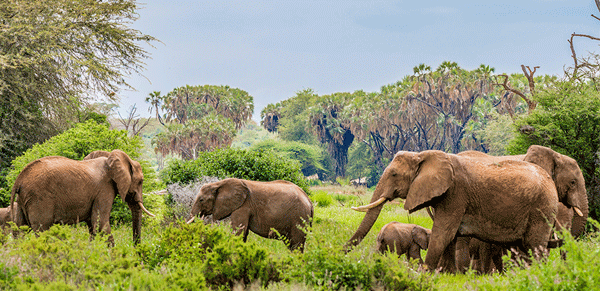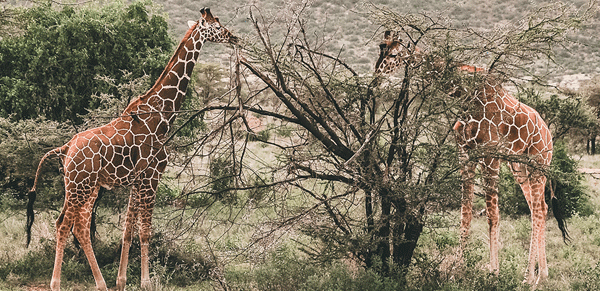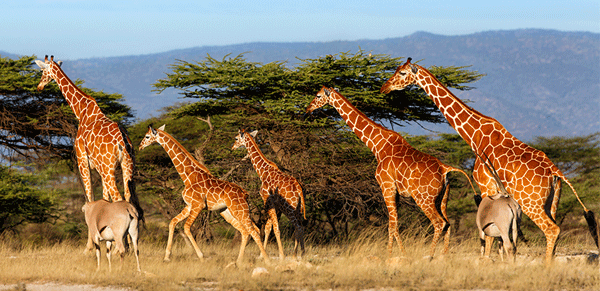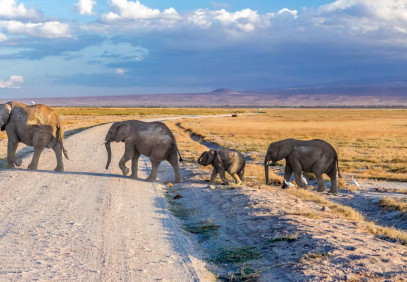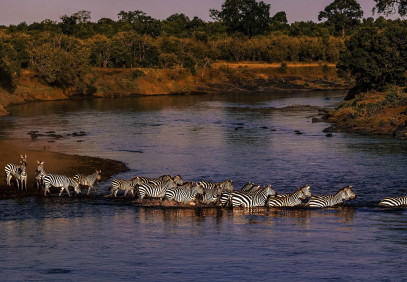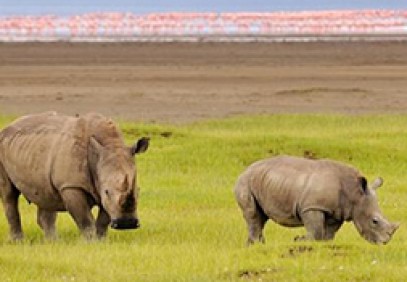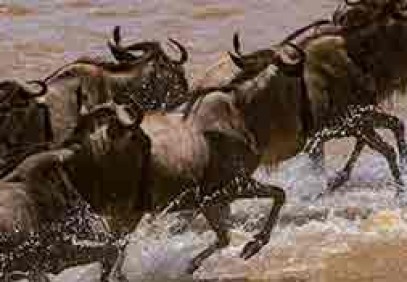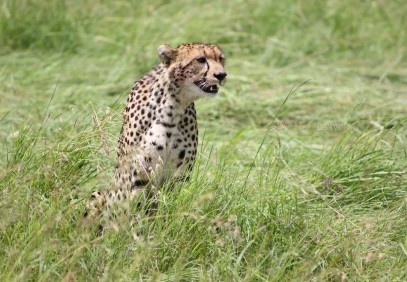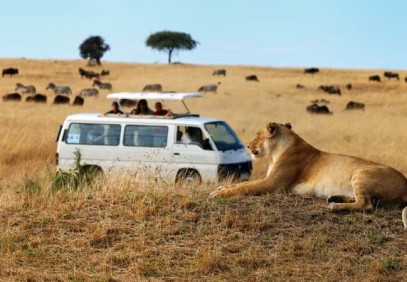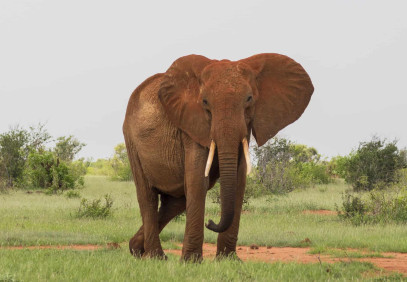Samburu National Reserve
Covering an expanse of 165 km2 along the banks of river Ewaso Ng’iro, Kenya stands an iconic safari destination; the Samburu National Reserve. The park is situated in the vicinity of the Buffalo Springs National Reserve that lies across the river. The park’s serene environment and unique topography, which is a mixture of riverine forests, grasslands, acacia forests, and thorn trees attract a large variety of animals and birds alike.
The park is well-known for its two lionesses, Elsa and Kamunyak. Elsa was partially raised in Samburu National Reserve by conservationists Joy and George Adamson. Kamunyak gained her name by adopting oryx calves.
The History of Samburu National Reserve
During the 1860s, Ludwig von Höhnel, an Austrian naval officer and explorer, visited the area that is now Samburu National Reserve. Upon his visit to the region, he found the land to be flourishing with wildlife, and most prevalent being buffalo and rhino.
- 1948: Marsabit National Reserve, now Marsabit National Park, was expanded to include the area now known as Samburu National Reserve. At this time, the area was declared a protected area. A senior ranger at the Marsabit National Reserve, Rodney Elliot, suggested that the Samburu area should become a stand alone reserve.
- 1962: After receiving a grant, and financial aid from the Elsa Conservation Trust, Samburu National Reserve was established.
- 1963: The local authorities decided to hand over the park’s administration to the African District Council of Samburu.
Wildlife in Samburu National Reserve
Of the predators in Samburu National Reserve, lion and cheetah are rarely seen, however, visitors can occasionally spot leopard and hyena. Some lucky visitors may even witness the fight of a lifetime when lions and Nile crocodiles battle over prey on the banks of the Ewaso Ng’iro river.
Elands, Grevy’s zebra, gerenuk, oryx, and reticulated giraffes are some dry-country adapted wildlife that live within Samburu National Reserve. These dry-country animals are rarely seen in other Kenyan national reserves and parks. They have adapted for survival, for example, the elands have control over their body temperature, letting it rise several degrees during the daytime, and cool down at night. Another way elands conserve water is by preventing perspiration. Gerenuks have mastered the acquisition of food in the area by standing upright and stretching on their hind legs to reach the freshest leaves.
Samburu National Reserve is also a treat for bird enthusiasts, with over 350 bird species calling the park home. Some of the unique bird species seen within the reserve include acacia tit, chestnut weaver, Fischer’s starling, rosy-patched bush-shrike, Somali ostrich and vulturine guinea-fowl.
The Story of Kamunyak The Lioness
The park is home to Kamunyak, a lioness that adopted at least 6 oryx calves. The word ‘Kamunyak’ means ‘the blessed one’. When the park rangers first observed this strange behaviour, they followed Kamunyak. At the time, the lioness was starved, and so was the oryx calf that had been separated from its mother and the herd. Even when the oryx calf wandered away from Kamunyak, the lioness followed. Once, the calf even tried to suck milk from Kamunyak, but to no avail.
Eventually, a lion grabbed the oryx and fed on it, and the starving Kamunyak could do nothing. Following this incident, the rangers and warden didn’t see Kamunyak for a long time, but later found out that Kamunyak had continued adopting oryx calves. A few survived and even returned to their herds. Kamunyak was last seen in 2004 and no one knows what happened to her, and after so many years, it might as well remain a mystery.
When to Visit Samburu National Reserve
For wildlife viewing, the best time to visit the Samburu National Reserve is during the dry season, between June and October, and December and March. With the drying vegetation, it’s easier to spot animals that gather around the water holes. During the wet season, with its abundant water supply, animals rarely have to go far in search of water, and the long grass makes it harder to spot them.
Although Samburu National Reserve is considered a year-round birding destination, the best time for bird-watching is from November to April. During this period, several migratory birds find their way into the reserve. Heavy rainfall takes place during these months, which must be considered when making any plans to visit the park.
Login to your account
Register as a traveller if you are looking for deals
Register as a travel partner if you offer amazing safaris
You May Also Be Interested In...

Chyulu Hills National Park
Dubbed the "Green Hills of Africa", the breathtaking scenery is the central attraction of the Chyulu Hills National Park located in the Makueni county of southeastern Kenya. Established in 1983, Chyulu...
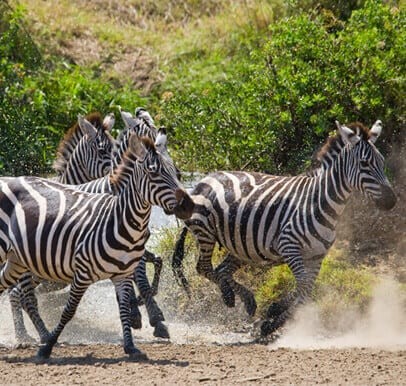
Nairobi National Park
Typically, most wildlife reserves and national parks are located in remote locations away from the hubbub of cities. However, Nairobi National Park, one of Kenya’s popular safari destinations, bucks...

Buffalo Springs National Reserve
Buffalo Springs National Reserve and Samburu National Reserve share an ecosystem and are located on the opposite banks of the Ewaso Nyiro River. Buffalo Springs covers an area of 131 square kilometres,...
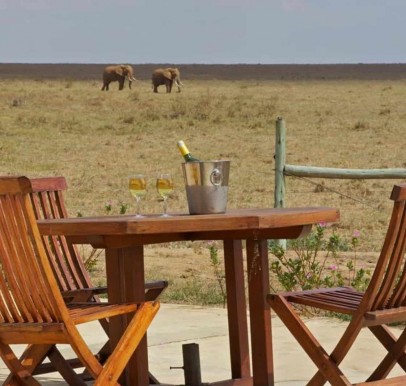
Tsavo East National Park
Tsavo East National Park covers 13,700 square kilometres of Kenya, which is nine times the size of Masai Mara National Reserve. Tsavo National Park refers to both Tsavo East and West National Park, which...
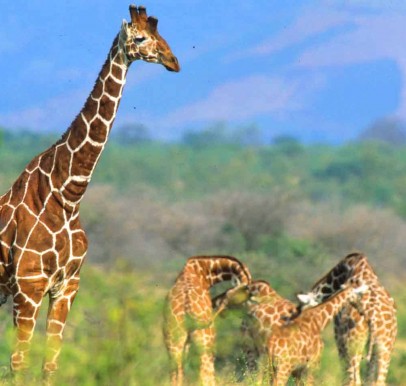
Meru National Park
Meru National Park, covering an area of 870.44 km2, is a remote national park in Kenya, Africa. This wild and beautiful park has diverse landscapes, which include open plains bordered by riverbanks, slopes...
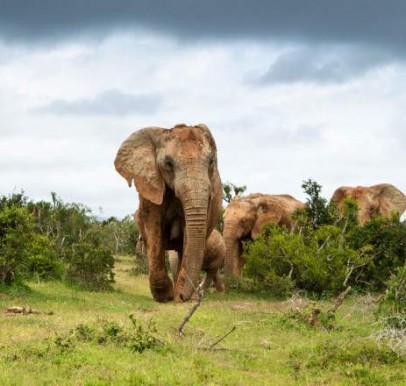
Amboseli National Park
Amboseli National Park, covering an area of 392 km2, has a unique ecosystem with a mixture of swamps and arid areas. Acacia woodlands, marshlands, open plains and rocky-thornbush are four of the five naturally...

Maasai Mara National Reserve
The Maasai Mara National Reserve in the southwest of Kenya covers an area of 1,510 square kilometres and consists mainly of open grasslands with clumps of acacia trees. One of Africa's most famous national...

